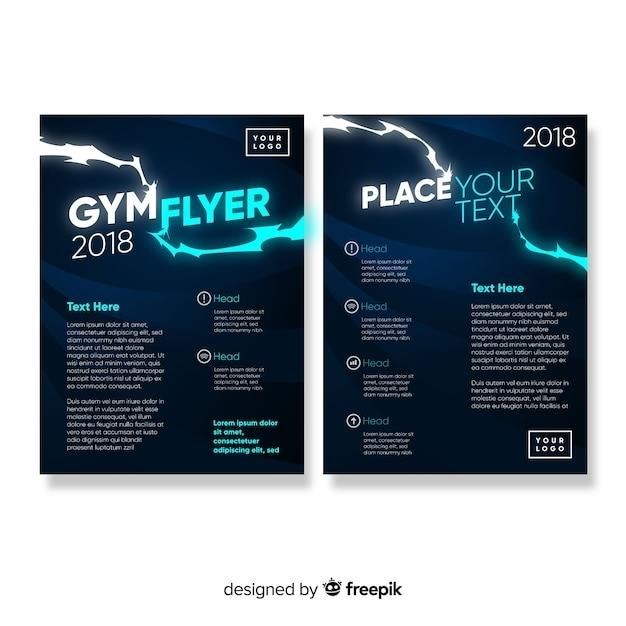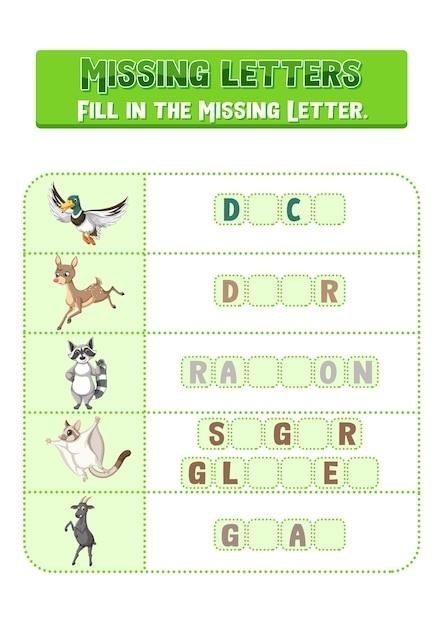RBT Competency Assessment Study Guide PDF⁚ A Comprehensive Plan
Embark on your journey to RBT certification with a comprehensive plan! Utilize study guides, videos, and resources like the RBT Handbook (2nd ed.).
These materials offer definitions, examples, and applications of the RBT initial competency assessment tasks. Jump-start your RBT career now!
The RBT Competency Assessment is a pivotal step towards becoming a Registered Behavior Technician. It’s a standardized evaluation, typically conducted by a Board Certified Behavior Analyst (BCBA), designed to ensure that aspiring RBTs possess the fundamental knowledge and skills required to provide effective behavior analytic services. This assessment evaluates a candidate’s understanding of key concepts and their ability to apply these concepts in real-world scenarios.
Candidates should familiarize themselves with areas such as measurement systems, skill acquisition, behavior reduction, and professionalism. Preparing for the RBT Competency Assessment requires a multifaceted approach. Candidates should begin by thoroughly reviewing the RBT Task List, which outlines the specific competencies that will be assessed.

The assessment structure includes details about the items assessed and the overall process. Utilizing study guides and seeking guidance from professionals can greatly enhance preparation. Flashcards, review details, and practice questions can be valuable tools in mastering the material. The goal is to ensure you are thoroughly prepared.
Understanding the RBT Task List
The RBT Task List serves as the cornerstone for the RBT Competency Assessment, outlining the specific knowledge and skills an RBT must demonstrate. Candidates should begin their preparation by thoroughly reviewing the RBT Initial Competency Assessment Packet! You’ll see every task that your BCBA will assess you on. Refresh yourself on the concepts by reviewing your 40-hour course notes.
This document is essentially a blueprint for the assessment, detailing the core competencies expected of a competent RBT. Each item on the task list represents a critical area of practice, from data collection and measurement to implementing behavior intervention plans and adhering to ethical guidelines. Familiarity with the task list is not merely about memorization; it requires a deep understanding of the principles underlying each task and the ability to apply them effectively in various clinical settings.
Candidates should break down the task list into manageable sections, focusing on areas where they feel less confident. Review your RBT study guide, focusing your study efforts on the tasks that will be evaluated in the competency exam. Test yourself on each task to determine a baseline and help guide your study efforts.
Key Areas Covered in the Assessment⁚ Measurement Systems
The RBT Competency Assessment places significant emphasis on measurement systems, a fundamental aspect of applied behavior analysis. Candidates must demonstrate proficiency in various data collection methods, including continuous measurement procedures like frequency, duration, and latency recording. Continuous Measurement Procedures, Frequency Data and more.
Understanding the nuances of each method is crucial for accurately tracking behavior change and making data-driven decisions. In addition to continuous measurement, the assessment also covers discontinuous measurement techniques such as partial interval, whole interval, and momentary time sampling. Candidates should be able to differentiate between these methods and understand when each is most appropriate based on the target behavior and the context.
Accurate data collection is the cornerstone of effective behavior intervention. The assessment evaluates a candidates knowledge of many tasks on the RBT task list. Study these concepts to ensure you understand what each one entails and how they apply to therapy sessions; Understanding these measurement systems is not just about knowing the definitions; it’s about applying them correctly and consistently in real-world scenarios.
Key Areas Covered in the Assessment⁚ Skill Acquisition
Skill acquisition, a cornerstone of the RBT’s role, is a critical area covered in the competency assessment. Candidates are expected to demonstrate a thorough understanding of various teaching procedures used to promote skill development in clients. This includes discrete trial training (DTT), a structured teaching method involving repeated trials with clear antecedents, behaviors, and consequences. Candidates should understand how to implement DTT effectively, including prompting strategies, reinforcement schedules, and data collection procedures.
Furthermore, the assessment covers natural environment teaching (NET), an approach that utilizes naturally occurring situations and materials to teach skills in a more authentic and engaging manner. Candidates should be able to identify opportunities for NET throughout the client’s day and adapt teaching strategies to fit the context. Preference assessments like forced choice and multiple stimulus assessments are.
Additionally, the assessment may include questions on chaining procedures (forward and backward), shaping, and prompting hierarchies. A solid grasp of these skill acquisition techniques is essential for RBTs to effectively support clients in achieving their learning goals.
Key Areas Covered in the Assessment⁚ Behavior Reduction

Behavior reduction strategies are a crucial component of the RBT competency assessment. Candidates must demonstrate their understanding of ethical and effective methods for decreasing challenging behaviors. This includes identifying the function of the behavior through functional behavior assessments (FBAs) or descriptive assessments. Understanding the “why” behind a behavior is critical for selecting the most appropriate intervention.
The assessment will likely cover antecedent interventions, which involve modifying the environment or situation to prevent the behavior from occurring in the first place. Examples include providing choices, altering routines, and enriching the environment. Candidates should also be familiar with consequence-based interventions, such as differential reinforcement procedures (DRA, DRO, DRI), extinction, and response cost.
It’s essential to know how to implement these procedures correctly and ethically, always prioritizing the client’s safety and well-being. Understanding the importance of data collection and monitoring the effectiveness of behavior reduction plans is also key. Candidates should understand that punishment procedures should only be considered when other less restrictive interventions have failed.
The Role of the RBT Handbook (2nd Edition)
The RBT Handbook (2nd Edition) serves as a cornerstone resource in preparing for the RBT competency assessment. This handbook is a comprehensive guide that details the essential competencies and ethical guidelines expected of a Registered Behavior Technician. It provides in-depth explanations of the tasks listed on the RBT Task List, offering practical examples and real-world scenarios to enhance understanding.
Candidates should use the handbook to familiarize themselves with the specific skills and knowledge required for effective and ethical practice. It clarifies the roles and responsibilities of an RBT, emphasizing the importance of working under the close supervision of a qualified supervisor, such as a Board Certified Behavior Analyst (BCBA). The handbook also outlines the ethical considerations that RBTs must adhere to, ensuring that they prioritize the well-being and rights of their clients.
Furthermore, the RBT Handbook provides valuable information on data collection, behavior assessment, and intervention strategies. Reviewing this handbook thoroughly is crucial for RBT candidates seeking to demonstrate competence and excel in their assessment. It reinforces the principles of applied behavior analysis (ABA) and promotes best practices in the field.
Ethical Considerations for RBTs
Ethical considerations are paramount for Registered Behavior Technicians (RBTs), forming the bedrock of responsible and effective practice. The RBT Ethics Code outlines the ethical requirements for RBTs and applicants, emphasizing the importance of integrity, respect, and client well-being. RBTs must prioritize the rights and dignity of their clients, ensuring confidentiality and informed consent. Maintaining professional boundaries is crucial, avoiding dual relationships that could compromise objectivity or exploit vulnerable individuals.
Competence is another key ethical consideration. RBTs must only provide services within their scope of competence, seeking appropriate training and supervision when necessary. Data integrity is essential, requiring accurate and honest recording and reporting of client progress. Any conflicts of interest must be disclosed and resolved ethically, prioritizing the client’s best interests. RBTs are obligated to adhere to all relevant laws and regulations, as well as the ethical guidelines established by the Behavior Analyst Certification Board (BACB).
Furthermore, RBTs must actively promote ethical conduct within their workplace and report any suspected ethical violations. Continuous professional development is vital to staying informed about ethical standards and best practices. By upholding these ethical principles, RBTs contribute to a culture of trust, accountability, and high-quality service delivery in the field of applied behavior analysis.
Study Resources and Preparation Strategies

Preparing for the RBT Competency Assessment requires a strategic approach utilizing various study resources. Start by thoroughly reviewing the RBT Task List, identifying key concepts and areas needing more attention. Refresh your understanding of these concepts using your 40-hour course notes and any RBT study guides you have. Focus your study efforts on the specific tasks outlined in the RBT Initial Competency Assessment Packet, as this will be the basis of your evaluation.
Consider using flashcards to memorize key terms and definitions, such as those related to continuous and discontinuous measurement. Practice applying these concepts through mock therapy sessions or role-playing scenarios. Explore online resources, including study guides and videos, to gain different perspectives and reinforce your learning. The RBT Handbook (2nd edition) is an invaluable resource, providing detailed information on competencies and requirements.
Seek guidance from professionals, such as BCBAs, who can offer insights and feedback on your understanding. Test yourself regularly using practice questions to assess your progress and identify areas for improvement. Effective preparation involves consistent effort, focused study, and a commitment to mastering the essential skills and knowledge required of an RBT. Remember to allocate sufficient time for studying and avoid cramming, ensuring you are well-prepared and confident on assessment day.
Utilizing RBT Competency Assessment Study Guides and Videos

RBT Competency Assessment study guides and videos are invaluable resources for effective preparation. These tools offer structured reviews of the RBT Task List, breaking down complex concepts into manageable segments; Study guides provide definitions, examples, and practical applications of each task, helping you solidify your understanding. Look for guides that cover measurement systems, skill acquisition, behavior reduction, and ethical considerations, ensuring you have a well-rounded knowledge base.
Videos offer a dynamic learning experience, allowing you to visualize scenarios and observe techniques in action. Many videos provide step-by-step instructions and demonstrations, making it easier to grasp abstract concepts. When selecting videos, ensure they are created by reputable sources and align with the RBT Task List requirements. Use study guides and videos in conjunction, supplementing your reading with visual aids to enhance retention.
Actively engage with the materials by taking notes, answering practice questions, and reflecting on how the concepts apply to real-world situations. Some study guides offer practice tests, allowing you to assess your readiness and identify areas needing further review. Remember to tailor your study plan to your individual learning style, incorporating the resources that best suit your needs. By utilizing RBT competency assessment study guides and videos effectively, you can significantly increase your chances of success.



